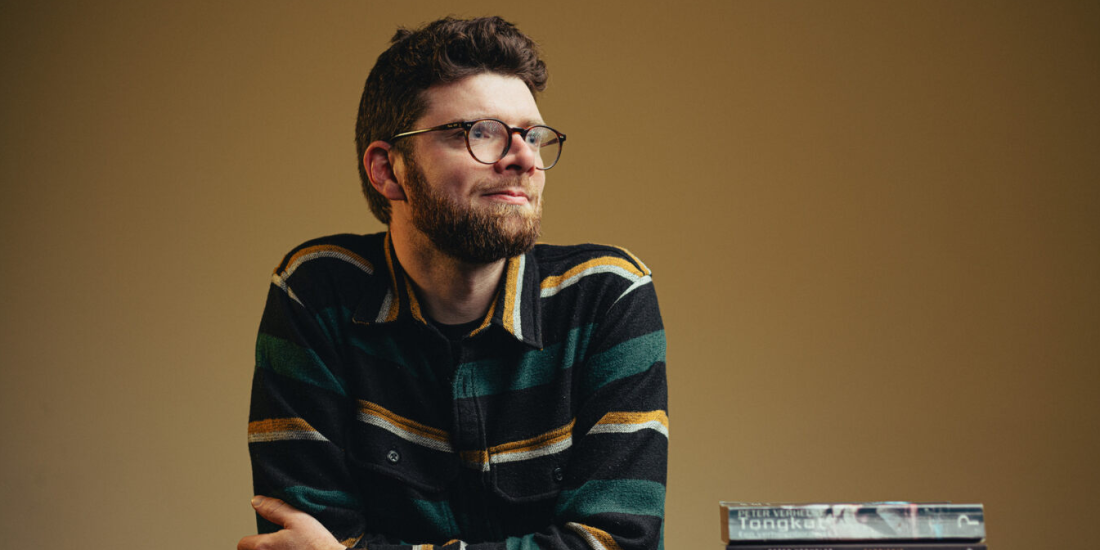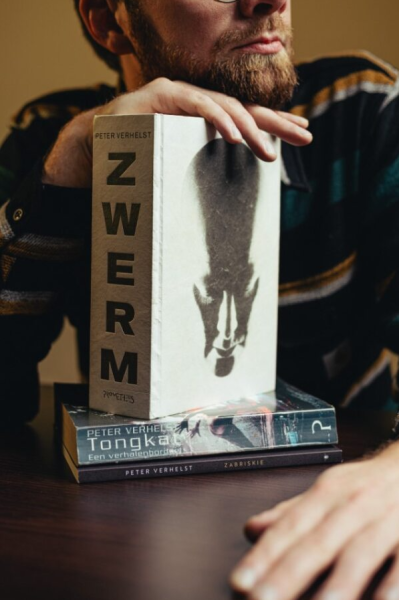Brecht on Peter Verhelst ⭐⭐⭐⭐⭐
Institutional Advisor Brecht read several books by Peter Verhelst. On 20 March, you can see meet the writer during the literary nocturne of the Surrealism exhibition Histoire de ne pas rire.
Hello Brecht. Who is Peter Verhelst to you?
I started reading his novel Tonguecat in the summer of 2000; there was something in the work that I didn’t understand but which attracted me at the same time. You could describe it as a kind of ‘magical surrealism’ – it’s not really surrealism but it’s a bit like it. Since then, I’ve read just about everything Peter Verhelst has written. He always plays with conventions. What should a novel be? Is this even a novel? I’ve yet to discover anything similar among anything else I’ve already read by other authors. He writes so sensuously without getting sentimental.
Why did you like reading it?
Peter Verhelst’s novels are never nicely finished stories; you have to dare to surrender to them as a reader. Swarm, for instance, cannot be summarised in two lines, but that doesn’t prevent you from enjoying the read. His language is very expressive, making his work a good fit with fine art. You can read his books repeatedly and still discover something new each time. He also constantly refers to art history; his novels and poetry have introduced me to the work of visual artists such as Dirk Braeckman, Johan Tahon, and Francis Bacon.
Why do we need to come to Bozar to see him?
There are different ways to go to an exhibition. In a literary nocturne, you are presented with three layers: the visual work, the writers’ poem, and the five writers themselves. This makes for a totally different experience during your visit to the exhibition, and gives you a new perspective on the works on display.
Who would you recommend Peter Verhelst’s books to?
To anyone. You may be put off by his work initially, as you may not understand everything immediately, but if you manage not to cling desperately to an urge to understand everything, you can be surprised by the stories and images.
How many stars do you give Peter Verhelst?
*****



